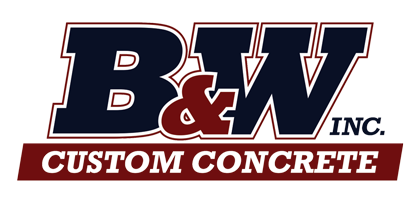Concrete is an incredibly functional and durable material used for a wide range of purposes. At B&W Custom Concrete in Buffalo, NY, we love to keep our customers informed about the product they’re purchasing. Here are eight interesting facts:
Concrete is the most-used material in the world
It may not come as a surprise to learn that concrete is very widely used - 20 billion tons are put to use every year. It is, in fact, used more than any other material in the world, perhaps because the aggregates (pebbles) and water used to create concrete are available virtually everywhere. China is the largest consumer, responsible for half of the world’s concrete annually!
Cement is used in concrete
Some people mistakenly think that cement and concrete are the same thing. Not so. In 1756, the British engineer John Smeaton made the first modern concrete (hydraulic cement) by adding pebbles as a coarse aggregate and mixing powered brick into the cement. But don’t be fooled. The Egyptians were using early forms of concrete over 5000 years ago to build pyramids.They mixed mud and straw to form bricks and used gypsum and lime to make mortars..
It wasn’t until 1824 that the English inventor Joseph Aspdin invented Portland Cement, which has remained the dominant form of cement used in concrete production. Aspdin created the first true artificial cement by burning ground limestone and clay together.
Concrete can be modified to appear like other materials that are more expensive
With the inception of many new technologies, concrete can be made to imitate more costly materials such as porcelain, wood, ceramic tiles, travertine or granite, leather, or brick. Because of this, it can be used for countertops, floors and so much more. When polished well, it can have a matte or shiny finish. You can stain, dye, or stamp concrete which makes it so widely diversified.
Concrete becomes stronger when it stays wet for a long duration
During the process of making concrete, a chemical reaction between the cement and water takes place. This is what strengthens the concrete. On average, it should be kept wet for at least three days.
Concrete continues to strengthen for decades
After approximately four weeks, concrete has reached about 90% of its final strength. However, it continues to strengthen for decades. Some bacteria can actually help strengthen it!
Very cold temperatures keep concrete from hardening
Surprising to some, cold weather slows down the rate at which concrete hardens. Concrete that’s being poured on wintry days needs to be protected because ice crystals in the cement can impair its ability to harden properly. When concrete is protected from the cold, the heat that’s generated from making it prevents it from freezing.
Incredibly high compression strength
Concrete commonly reaches between 3,000 and 7,000 psi (pressure per square inch), though it can reach as much as 20,000 psi. When reinforced with steel, it is even more sturdy and more rigid.
Concrete is used for motorway bridges and high-rise buildings
Almost all bridges use concrete for decks because it is both easier to maintain and cheaper than steel. It remains in use in the construction of high-rise buildings; the tallest concrete structure in the world is the Trump International Hotel and Tower, standing at nearly 1,400 feet.
These are nice-to-know facts. But becoming a concrete expert takes time, so if you’re a novice, it’s best to consult B&W Custom Concrete in Buffalo, NY for your next concrete construction project.



